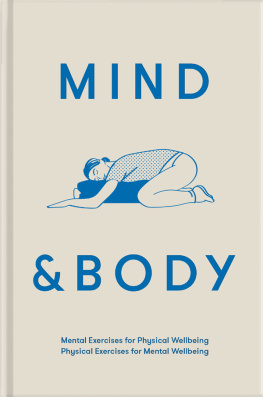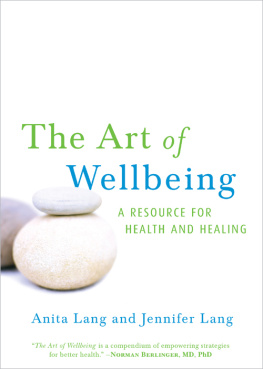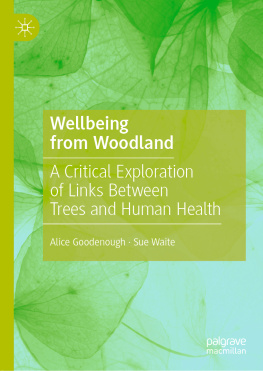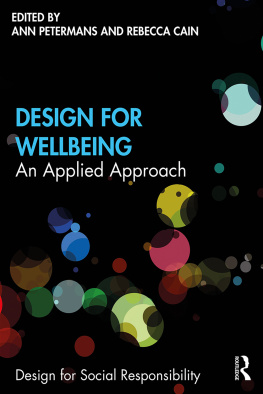
WHOSE BODY IS IT ANYWAY?
There is a widespread interest in wellbeing, the healthy body and public health. However, there are also many simplistic and uncritical interpretations of what wellbeing or a healthy body should look like. By focusing upon wellbeing through examples taken from fitness-related activities, which are often considered unproblematic routes to achieving wellbeing and greater public health, this book explores contemporary understandings of the body and the conflicting ways in which it is considered, in different contexts, times and spaces, either as the possession of the individual or that of society (or both).
Whose Body Is It Anyway? adopts an embodied approach, employing sociological theory along with examples drawn from empirical research collected through participation (by the author) in an intense period of physical training. The intention is to explore the embodied experiences of doing an intensive period of physical activity and, subsequently, attempt to understand, in more depth, the range of personal, social, psychological and physical factors that undoubtedly contribute to engaging in such an activity.
The emerging story reveals much about the physical and emotional experience of a body being put through intensive exercise, not only in terms of contrasting forms of pleasure and pain, but also various socio-cultural issues relating to relationships of power, trust and the role of expert health advisor. Written in a clear and engaging style, the book provides an accessible introduction of more complex theoretical explanations which will appeal to academics and practitioners involved in broad aspects of sport, physical activity, health and wellbeing.
Ian Wellard is a sociologist of Sport and the Body. His main research interests relate to embodied practices, physical activity, gender and sport. Much of this research has been generated through ethnographic studies, which draw upon qualitative and reflexive approaches to the ways in which embodied identities are constructed and negotiated. His previous publications include Researching Embodied Sport (2015), Sport, Fun and Enjoyment (2013), Sport, Masculinities and the Body (2009) and Rethinking Gender and Youth Sport (2007), all published by Routledge.
WHOSE BODY IS IT
ANYWAY?
A Sociological Reflection upon
Fitness and Wellbeing
Ian Wellard
First published 2019
by Routledge
2 Park Square, Milton Park, Abingdon, Oxon OX14 4RN
and by Routledge
711 Third Avenue, New York, NY 10017
Routledge is an imprint of the Taylor & Francis Group, an informa business
2019 Ian Wellard
The right of Ian Wellard to be identified as author of this work has been asserted by him in accordance with sections 77 and 78 of the Copyright, Designs and Patents Act 1988.
All rights reserved. No part of this book may be reprinted or reproduced or utilised in any form or by any electronic, mechanical, or other means, now known or hereafter invented, including photocopying and recording, or in any information storage or retrieval system, without permission in writing from the publishers.
Trademark notice : Product or corporate names may be trademarks or registered trademarks, and are used only for identification and explanation without intent to infringe.
British Library Cataloguing-in-Publication Data
A catalogue record for this book is available from the British Library
Library of Congress Cataloging-in-Publication Data
Names: Wellard, Ian, author.
Title: Whose body is it anyway? : a sociological reflection upon fitness and wellbeing / Ian Wellard.
Description: Abingdon, Oxon ; New York, NY : Routledge, 2019. | Includes bibliographical references.
Identifiers: LCCN 2018025983| ISBN 9781138959507 (hardback) | ISBN 9781138959514 (pbk.) | ISBN 9781315660608 (ebook)
Subjects: LCSH: Physical fitnessSocial aspects. | Well-beingSocial aspects. | Body imageSocial aspects.
Classification: LCC GV342.27 .W45 2019 | DDC 613.7dc23
LC record available at https://lccn.loc.gov/2018025983
ISBN: 978-1-138-95950-7 (hbk)
ISBN: 978-1-138-95951-4 (pbk)
ISBN: 978-1-315-66060-8 (ebk)
Typeset in Sabon
by Swales & Willis Ltd, Exeter, Devon, UK
I would like to thank Routledge for their continued support. I know that what I like researching and writing about does not always follow the current trends, so I am grateful that they consider me worth the risk.
I would also like to thank those who have helped me in my thinking over the last couple of years. In particular, Lucy, James and the other James, who between them managed to bring CrossFit to my attention and help me find something to fill the gap left after having to give up tennis.
Lastly, I would like to thank John (again) for his patience and support and Toby whom we miss like mad.
In this book, I explore how contemporary knowledge about the body shapes the way in which it can be experienced in different contexts, times and spaces as either the possession of the individual or the possession of society (or both). I examine these ideas through the central theme of sport and physical activity, which is an aspect of contemporary life that is often considered to be an automatic pathway to wellbeing. In this formulation of wellbeing, the notion of having a healthy body or a sporty body is often in direct contrast to an unhealthy or non-sporty body. This simplistic binary provides a useful mechanism to explore the contradictions and tensions that lie beneath the surface, allowing opportunities to assess the ways that the social body operates to look after the individual while, it could be argued, at the same time imposing restrictions on how the body can operate at an individual level. However, a binary of sporting and non-sporting participation (those that do and those that do not want to), which is often cited in many public and academic spheres, does not allow for a more nuanced consideration of the conflicting ways in which knowledge is generated and subsequently interpreted by an individual. Within professional health circles the focus is invariably on those who are less active and, consequently, perceived as a problem. The proposed remedy is to provide measures to engage them in physical activity. In many cases, critical reflection is not made about what it is they should be doing or what, indeed, the experience of getting active actually means to someone who does not find the idea of being active appealing. Likewise, there is often an unquestioned assumption that what sporty people are doing is always necessarily healthy.
Underlying all of these assumptions is knowledge about health, generated through formulations of science and medicine, which specifically focuses on biological prescriptions of what a healthy body should look like and how it should behave. In order to acknowledge the influence of sociological and historical elements within these bio-scientific understandings, I have drawn on the example of contemporary sport and fitness practices to reveal the competing factors that influence the way we view and make sense of our own bodies and those of others. Incorporation of an embodied approach allows the introduction of more complex theoretical explanations, which are crucial in our attempts to understand what shapes our perceptions of healthy activity and, ultimately, the extent to which we have a say in whose body it is anyway.









